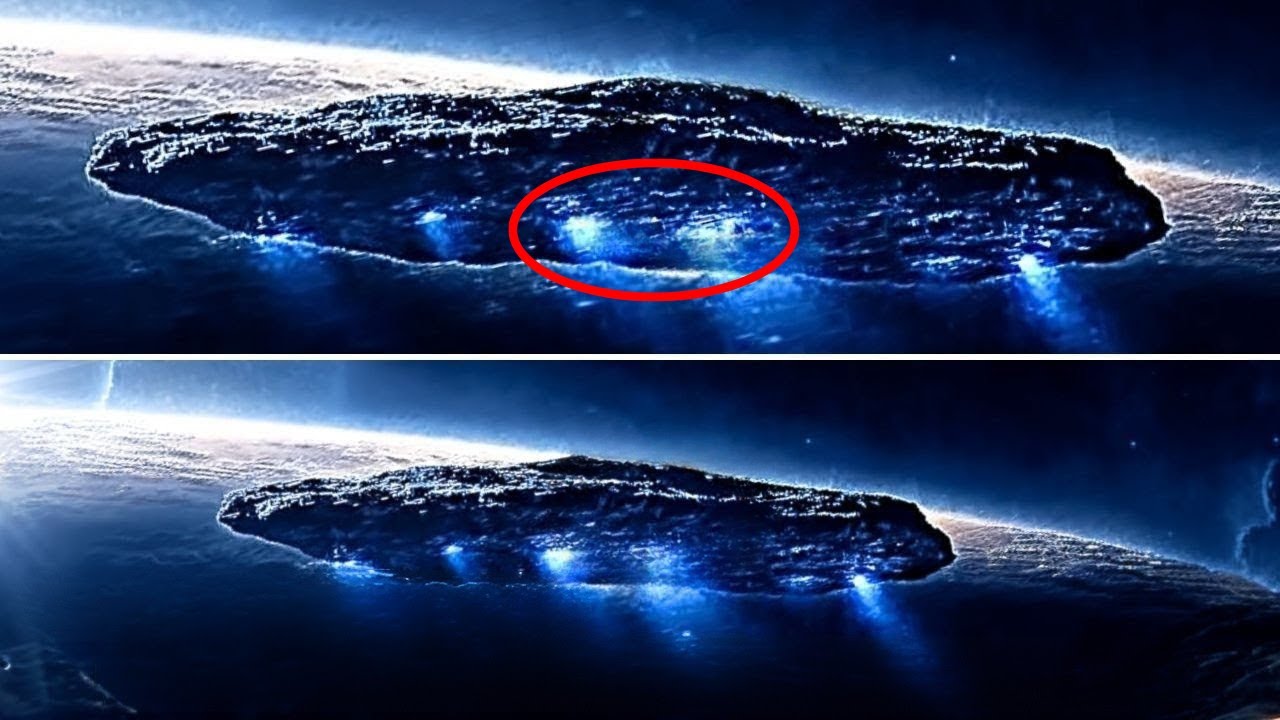🚨🚨 JUST IN: A massive interstellar beast like ‘Oumuamua has blasted into our solar system—scientists worldwide are stunned, issuing urgent alerts as it hurtles toward Mars! What ancient secrets or cosmic threats does it carry from the stars? The shocking revelations are emerging—don’t look away! 👉

In a development captivating astronomers and space agencies alike, the interstellar comet 3I/ATLAS – a massive cosmic wanderer reminiscent of the enigmatic ‘Oumuamua – is making its closest pass by Mars today, October 3, 2025, prompting urgent observations and alerts from NASA, ESA, and other international partners. Discovered just three months ago, this third confirmed visitor from beyond our solar system has scientists scrambling to unlock its mysteries, with its unusual size, composition, and trajectory fueling speculation about its origins and potential implications for our understanding of the galaxy.
The comet, formally designated C/2025 N1 (ATLAS), was first spotted on July 1, 2025, by NASA’s Asteroid Terrestrial-impact Last Alert System (ATLAS) telescope in Río Hurtado, Chile. Its hyperbolic trajectory and high velocity of about 58 kilometers per second relative to the Sun immediately marked it as an interstellar object, unbound by our solar system’s gravity and originating from the direction of the constellation Sagittarius. Precovery observations extended its known path back to June 14, 2025, confirming its extrasolar journey that may span billions of years.
Today’s flyby brings 3I/ATLAS within approximately 29 million kilometers (18 million miles) of Mars at around 4 UTC, offering a rare vantage point for a fleet of orbiting spacecraft. NASA’s Mars Reconnaissance Orbiter (MRO) with its HiRISE camera, MAVEN, Perseverance and Curiosity rovers; ESA’s Mars Express and ExoMars Trace Gas Orbiter; UAE’s Hope probe; and China’s Tianwen-1 are all primed to capture images, spectra, and data on the comet’s activity. These observations could provide unprecedented close-up views, especially as the comet is currently obscured from Earth-based telescopes due to its position relative to the Sun.
What has left scientists particularly stunned is 3I/ATLAS’s anomalous properties, echoing the intrigue surrounding ‘Oumuamua, the cigar-shaped interstellar visitor of 2017 that sparked debates over its possible artificial origins. NASA’s James Webb Space Telescope (JWST) observations on August 6 revealed a coma dominated by carbon dioxide at an 8:1 ratio to water ice – among the highest ever recorded – alongside carbon monoxide, carbonyl sulfide, and amorphous water ice. This composition suggests formation in an ultra-cold environment far removed from our solar system, potentially offering clues to exoplanetary chemistry.
Adding to the astonishment, the Very Large Telescope detected atomic nickel emissions without accompanying iron, a chemical oddity hinting at “industrial-grade” materials atypical for comets. Hubble’s July 21 imaging showed a teardrop-shaped dust cocoon and a sunward “anti-tail,” while polarimetric data revealed extreme negative polarization – a light-scattering behavior never seen in solar system comets. Estimates place the nucleus at up to 20 kilometers wide, with some studies suggesting an age of 7.6 to 14 billion years, predating our Sun and possibly originating from the Milky Way’s thick disk of ancient stars.
Harvard’s Avi Loeb has amplified the buzz, proposing in papers that such anomalies could indicate a technological artifact, though NASA officials like Tom Statler emphasize natural cometary processes driven by solar heating. Northeastern physicist Jacqueline McCleary notes the CO2 richness provides planetary formation insights without needing extraterrestrial explanations. No threat to Earth exists; the comet’s closest approach to our planet is 1.8 AU (170 million miles), and it poses no collision risk.
The alerts stem from the opportunity’s rarity and the ongoing U.S. government shutdown, which has furloughed non-essential NASA personnel, potentially hampering real-time data processing despite essential missions continuing. Social media is abuzz with speculation, from conspiracy theories of alien probes to fears of scrubbed data, but experts urge focus on the science.
Following the Mars flyby, 3I/ATLAS heads to perihelion on October 29-30 inside Mars’ orbit, where solar conjunction will hide it from Earth until December. ESA’s Juice mission at Jupiter may observe it in November, capturing post-perihelion activity like a bright halo and tail. NASA’s Parker Solar Probe and Juno could also contribute, with the Vera C. Rubin Observatory poised to hunt for more such visitors.
This event builds on ‘Oumuamua’s legacy, where non-gravitational acceleration puzzled researchers until hydrogen outgassing theories emerged. Unlike ‘Oumuamua’s inert appearance, 3I/ATLAS shows clear cometary activity with a reddish dust coma, aligning more with 2I/Borisov but with unique twists.
Public fascination mirrors past interstellar encounters, blending awe with fringe claims of signals or course changes – all debunked by data. As observatories like Gemini and Hubble continue analysis, 3I/ATLAS underscores the galaxy’s dynamism, carrying pristine material from another star system after eons in the void.
In the broader context, these visitors challenge models of planet formation and volatile distribution, hinting at thousands more lurking undetected. While no evidence supports artificial origins, the stunned reactions reflect the thrill of the unknown. As Juice and others gear up for November views, humanity watches this galactic messenger, pondering our place in a crowded cosmos.





